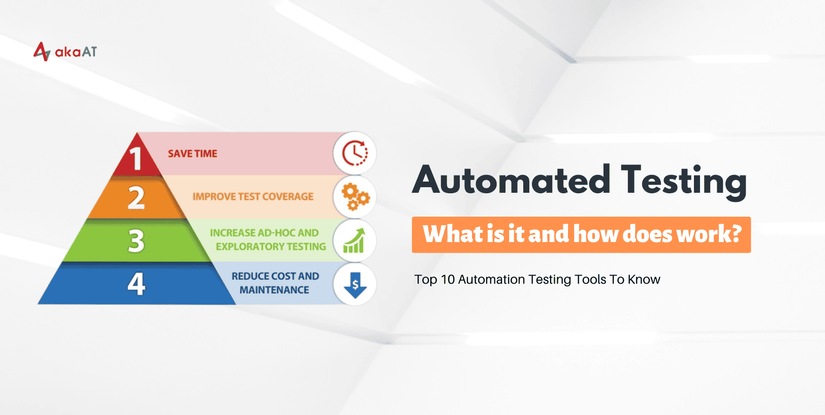
Before software becomes a product, automation testing is an important step that checks that the software works correctly and meets the specified criteria. The software testing steps have been set up sequentially in advance so that the testing tools can perform. As a result, automated testing tools can perform software testing, and store and evaluate test results through comparison with previously tested results. A company can use test automation for many cases such as unit, API, and regression testing. The main advantage of using test automation is to reduce manual test execution through test scenarios as much as possible. For example, if the QA team’s resources are mainly focused on unit testing, then the procedure step might prioritize automated execution.
1. Benefits of Automated Testing
Automated testing helps to increase the efficiency of QA’team. Some of the benefits may include:
- Increase accuracy
- Better report quality
- Increased coverage
- Resource optimization
- Error detection is easy
- Can be repeated many times Software testing is very error prone when manually testing a system, especially when the application has hundreds of thousands of lines of code. Application testing will be made simpler for the QA team if it can be automated, contributing to speeding up the testing process compared to manual testing.
2. Build Test Automation strategy
Many teams today tend to switch to applying the AGILE method according to the pyramid testing strategy model. The test automation process applying the test automation pyramid strategy is divided into 3 phases. The first stage, which is also the bottom of the pyramid, performs unit testing. At Service layer or API will be the next stage. The last stage, or top of the pyramid, is GUI tests. These stages are described as shown below:

Integrated GUI and API testing solutions like TestComplete can make it simpler to perform automated pyramid tests by ensuring that when changing API test cases, cases are at the GUI level will also change accordingly. Some test automation solutions like the ability to write each test script in a report and display the results to users. A tester can thus evaluate whether the program’s performance meets the expectations and requirements by comparing the results of the reports.
3. Some misunderstandings about test automation
Here are some misunderstandings:
- Development teams have a lot of free time thanks to automated testing In fact, automated testing gives programmers more time to focus on important issues in product development. .
- Manual testing is less effective than automated testing. In fact, on the contrary, both automated and manual testing have their own benefits, combining these two methods helps to better understand an application.
- Automated testing limits human interaction. In fact, automated testing can improve communication by opening up new channels.
- The cost of automated testing is too high. The truth is that the initial investment can be high, but over time the advantages of this approach will become apparent by reducing the cost of manual test repetition and code changes.
4. Who is involved in the automation testing process?
According to the AGILE thinking idea, the process of constant checking is known as the “shift left” strategy. Testing is started as early in the life of an application as shift left in agile development. By implementing testing according to this strategy, programmers with good technical background can often collaborate with testers during the development of test automation frameworks. A tool needs the participation of all the different team members in deciding the choice of test solution for the testing process. Include:
- Manual testers – Manual testers: for manual testers, specifically for those who are new to automation, archiving and re-execution is the main task. It is useful to be able to use the same recorded script with the same amount of data input for problem identification and problem solving across multiple environments.
- Automation engineers: for automation engineers, scripting language support, CI system integration, and the ability to simplify testing are important.
- Developers – programmers: responsible for integrating testing into the development process to make the tests run in IDE environments such as Eclipse and Visual Studio
5. Getting Started with Automated Testing
Being able to create an effective test plan is a challenge, as each team will have a different approach. Some can do it from scratch and rely on programmers to replace manual work, while others may need more manual testers than automation engineers. Either way, the test automation plan that needs to be executed and considered depends on many factors: budget, deadline, application type and development method.
6. Automation testing tools
Nowadays there are a lot of Functional and Regression testing tools available in the market.
